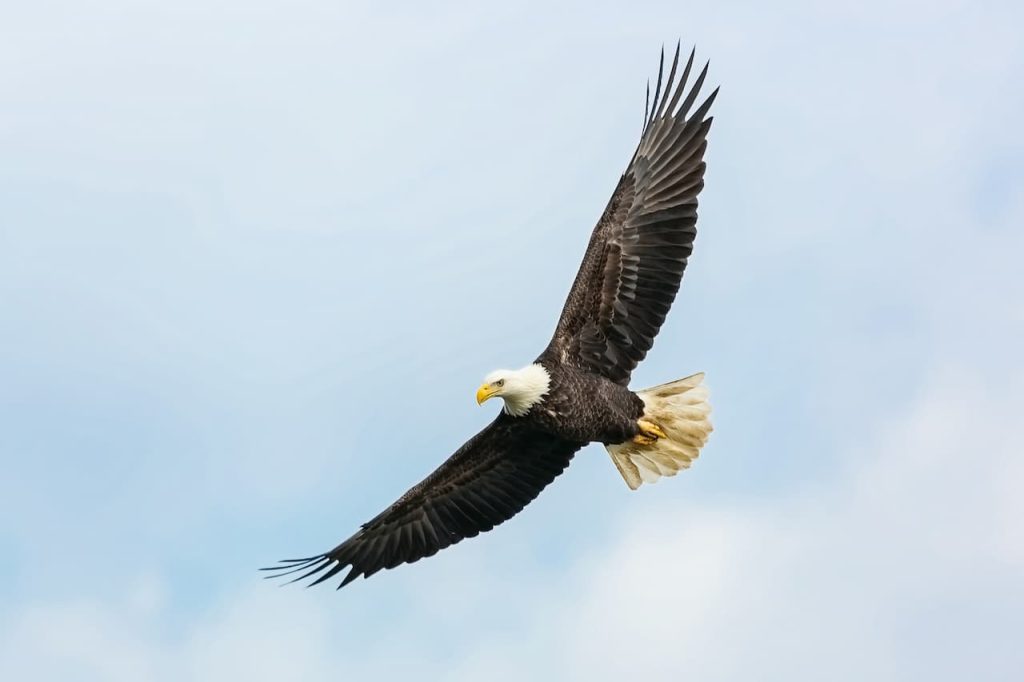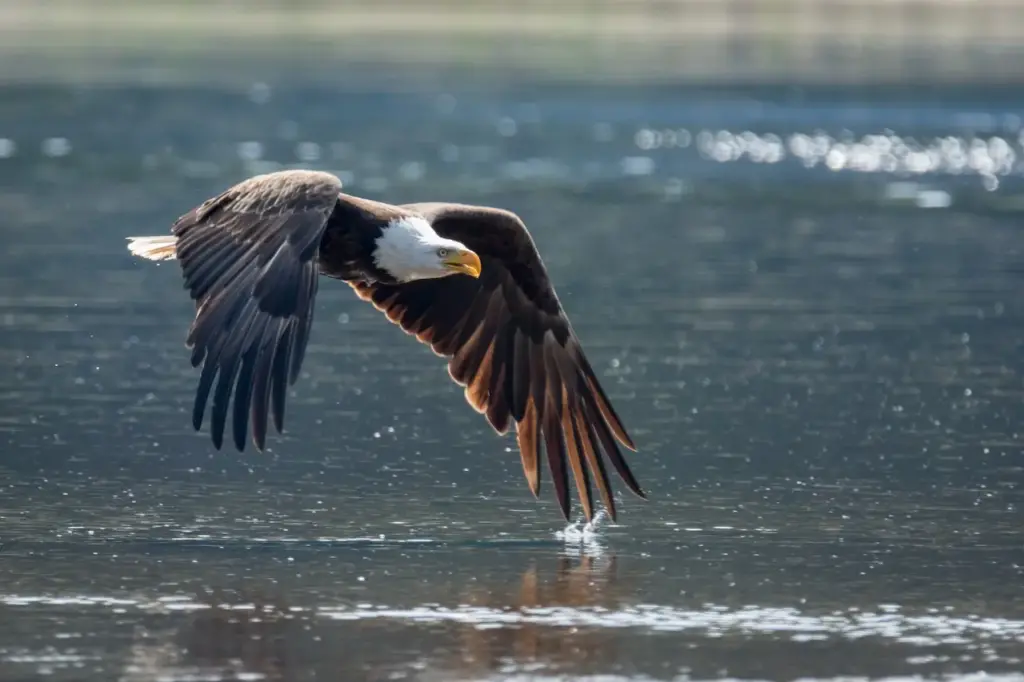What Eats Eagles?
Categories
- Accipitridae (1)
- Acrididae (1)
- Algae (2)
- Alligatoridae (1)
- Amoebidae (1)
- Amphibians (3)
- Anatidae (1)
- Anguillidae (1)
- Arachnids (2)
- Bears (2)
- Big Cats (3)
- Birds (13)
- Bovidae (5)
- Bufonidae (1)
- Camelids (1)
- Cameras (1)
- Canines (13)
- Caridea (1)
- Carnivora (10)
- Castoridae (1)
- Cats (5)
- Cebidae (1)
- Cephalopod (1)
- Cervidae (2)
- Cetacean (1)
- Chondrichthyes (1)
- Crocodilia (2)
- Crustaceans (4)
- Culicidae (1)
- Cyaneidae (1)
- Dasypodidae (1)
- Dasyurids (1)
- Deer (1)
- Delphinidae (1)
- Desktop (1)
- Didelphidae (1)
- Dinosaurs (1)
- Dogs (13)
- Dolphins (2)
- Echinoderms (1)
- Education (10)
- Elephantidae (1)
- Equine (1)
- Erethizontidae (1)
- Erinaceidae (1)
- Farming (1)
- Felidae (5)
- Fish (5)
- Food Chain (31)
- Food Web (2)
- Formicidae (1)
- Frugivore (1)
- Gaming (1)
- Gastropods (1)
- Giraffids (1)
- Great Apes (2)
- Health Conditions (3)
- Herbivore (4)
- Hi-Fi (1)
- Hippopotamidae (1)
- Hominidae (1)
- Insects (10)
- Invertebrates (2)
- Keyboards (1)
- Laptops (1)
- Leporidae (1)
- Mammals (23)
- Marsupials (4)
- Mephitidae (1)
- Microchiroptera (1)
- Mollusks (2)
- Mongoose (1)
- Muridae (1)
- Nocturnal Animals (1)
- Odobenidae (1)
- Omnivore (2)
- Phasianidae (1)
- Phocidae (1)
- Plankton (1)
- Plants (2)
- Primate (1)
- Ranidae (1)
- Reptiles (7)
- Rhinocerotidae (1)
- Rodents (5)
- Salamandridae (1)
- Scarabaeidae (1)
- Sciuridae (2)
- Sharks (1)
- Shellfish (1)
- Sound (1)
- Spheniscidae (1)
- Suidae (1)
- Superfamily Papilionoidea (1)
- Theraphosidae (1)
- What Eats (5)
Eagles are large birds of prey that sit atop the avian food chain. As apex predators with few natural enemies, eagles play an important role in balancing ecosystems across the world.
However, eagles have a complex relationship with other wildlife, and their diets can vary greatly across different species.
In this article, we will explore what preys on eagles, as well as detail the diverse eating habits of these regal birds.
Table of Contents
ToggleNatural Predators of Eagles
While eagles reign supreme in the skies, they do face threats from some land and air predators. Eagles mainly become prey when they are vulnerable – either as egg nestlings or if they become injured or sick. Here are some of the main natural predators of eagles:
Other Eagles
Eagles are most threatened by their own kind. Larger eagle species will prey on smaller ones and also raid each other’s nests for eggs and chicks.
For example, the large Steller’s sea eagle is known to hunt the smaller golden eagle. Eagles viciously defend their territories from intruders, but nest raids still occur regularly in the wild.
Owls
Some large owl species pose a major threat to eagles. Powerful owls and Eurasian eagle owls will attack nests and have been known to kill eagle chicks and even adults in territorial disputes. Their silent flight gives them the element of surprise when they strike at night.
Snakes
Snakes raid eagle nests and consume eggs. Reticulated pythons, black rat snakes, and other large constrictor species pose the greatest danger. Some can even kill and eat vulnerable eagle chicks.
Large Carnivorous Mammals
Predators like wolves, bears, snow leopards, and lynx will prey on flightless chicks or injured adult eagles if given the chance. Felines are especially adept climbers and can access cliffside eyries.
Humans
Eagles face persecution from humans in many regions. Farmers may kill them to protect livestock, while poachers hunt eagles for their feathers and trophies. Habitat loss also threatens many populations. However, most eagle species are now protected by law.
What Do Eagles Eat?
Now, let’s look at the dietary habits of eagles. Raptors are opportunistic predators, and their prey preferences depend on habitat, available food sources, and the size of the eagle species.
Fish
Fish comprise a large part of most eagles’ diets, especially those living near rivers, lakes or coastlines. Bald eagles and African fish eagles mainly feed on fish, which they swoop down and snatch from the water with their talons. The huge Steller’s sea eagle lives almost entirely of fish and marine animals.
Waterfowl
All types of water birds are on the menu. Eagles feed on ducks, swans, herons, grebes, coots, and other waterfowl. A hit-and-run hunting technique is often used, where they scatter flocks and snatch a fleeing bird mid-air.
Carrion
Eagles are opportunistic scavengers. They utilize their incredible eyesight to scan the landscape for animal carcasses. Carrion could include anything from dead fish washed up on shore to mammal roadkill. Vultures compete with eagles over these meals and often cede the food to the larger birds.
Small Mammals
Almost any small mammal may end up prey – rabbits, hares, ground squirrels, marmots, raccoons, prairie dogs, and monkeys. Some large eagle species even attack bigger game and have been known to kill young deer and antelope.
Other Birds
Eagles prey on many bird species of all sizes. Gulls, pigeons, doves, grouse, pheasants and other upland gamebirds are common targets. Larger eagles will even attack other birds of prey, including hawks, owls, and smaller eagles.
Reptiles
Snakes, lizards and turtles supplement the diet of some eagle species. The crowned eagle has developed a taste for reptiles and specializes in hunting large snakes like cobras and rock pythons.
Insects
In some cases, small invertebrates like crabs and insects may be eaten. This is more typical of eagle chicks learning to hunt but can continue into adulthood for certain species.
Scavenging
If they don’t catch the prey themselves, eagles are happy to chase off and feast upon the kills of other predators. With their razor-sharp vision, eagles often outcompete other scavengers like vultures, foxes, and gulls over these stolen meals.
Carrion
As mentioned earlier, eagles will readily eat decaying animal remains and roadkill. These free dead meals provide easy calories when hunting is unproductive.
Human Food Waste
In areas like landfills, fishing docks, and urban regions, eagles increasingly feed on human food waste and scraps to supplement their natural prey. This can cause health problems but also provides easy foraging.
Unique Hunting Strategies
To catch their prey, eagles have developed specialized hunting techniques and behaviors:
Short Hunting Flights
Eagles will survey the terrain from a high vantage point and then swoop down for a quick hunt when prey is spotted. These short bursting flights allow them to expend minimal effort while hunting.
Soaring
Eagles are masters at soaring on warm air currents and updrafts. Soaring high overhead allows them to scan large areas in search of a meal and saves energy.
Still-Hunting
This is when an eagle will perch motionless, watching for prey activity. Golden eagles in particular, utilize a still-hunting perch-and-swoop technique when targeting mammals.
Harrying
If hunting cooperatively, eagles may harry and drive prey toward each other or towards obstructions to impede escape. They take turns diving at the panicking animal.
Food Piracy
Stealing food from other birds is a common tactic. Eagles may intimidate smaller raptors or scavengers into giving up their hard-earned meals.
Walking Hunting
A surprising behavior seen in some specialized eagle species is walking and hunting on land. The African crowned eagle walks stealthily in vegetation to ambush monkeys, while the Philippine eagle walks tree branches to attack lemurs.
Water-Walking
To reach stranded fish or flushed water birds, bald eagles and sea eagles will paddle across the water’s surface. Their oiled feathers repel water, allowing them to swim when needed.
Unique Physiological Adaptations
Eagles have evolved remarkable physical attributes tailored for their lives as powerful aerial hunters:
Keen Vision
Eagles are renowned for their visual acuity, enabling them to spot tiny prey from great heights. Their large retina is densely packed with light-sensitive cells, providing phenomenal vision.
Large Wing Size
Broad wings allow eagles to utilize updrafts and thermal winds to soar with little effort. Their wings are tailored to their body size and hunting habitats. Larger wings aid soaring, while smaller wings assist more agile flight in forests.
Sharp Talons
A hallmark raptor trait, eagles have sizable curved talons used for swiftly killing prey and lifting it in flight. The outer rear talon is the largest and most dangerous. Talons exert an incredible 500psi of gripping power.
Large Flying Muscles
Up to one-third of an eagle’s body weight consists of the massive pectoral and shoulder muscles that power their wing beats. This allows them to carry heavy loads in flight.
Singles Breeding
Eagles are almost entirely monogamous, mating for life. This is partly attributed to the extreme demands of raising offspring. Both parents are essential in hunting to provide enough food.
Slow Reproduction
Most eagle species lay just 1-3 eggs per breeding season. The low reproductive rate means eagle populations are slow to recover from threats such as habitat loss and environmental toxins.
Conclusion
Eagles occupy a crucial ecological niche as dominant avian predators. They help control prey populations and serve as an indicator species for ecosystem health.
Learning more about the complex dietary adaptations and behaviors of eagles can assist conservation efforts for these majestic birds.
While formidable hunters, eagles do still face threats from human activity and climate change across their ranges worldwide.



